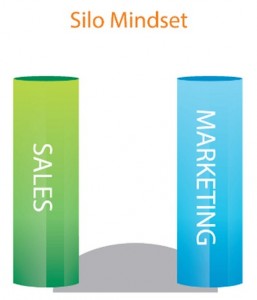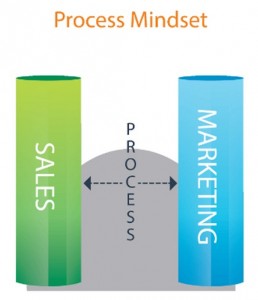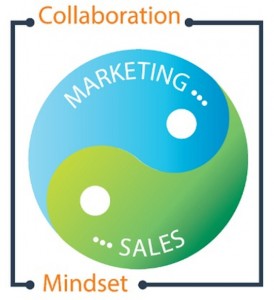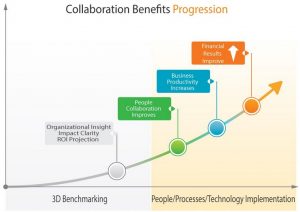How ‘smarketing’ boosts sales results and customer experience
Share
Integrating sales and marketing is a key step towards achieving your business goals, writes Peter Strohkorb.
 The digital economy and the buyer’s journey have revolutionised the way that people and organisations conduct their purchasing, particularly when it comes to large B2B sales. While it was once enough to have a relationship with one’s customers to secure their loyalty, it has become increasingly apparent that, especially in competition-saturated vertical markets, the quality of these relationships is a driving factor in attracting, satisfying and retaining customers.
The digital economy and the buyer’s journey have revolutionised the way that people and organisations conduct their purchasing, particularly when it comes to large B2B sales. While it was once enough to have a relationship with one’s customers to secure their loyalty, it has become increasingly apparent that, especially in competition-saturated vertical markets, the quality of these relationships is a driving factor in attracting, satisfying and retaining customers.
Sales and marketing are, of course, two of the most customer-facing functions in any organisation. They may not be the face of the organisation in the boardroom, but they certainly are that face in the marketplace. Customers gauge organisations by the way sales and marketing departments speak to and with them.
Since today’s buyers report that they are looking for quality and consistency in this dialogue, you would think that the senior management team’s top priority would be to ensure that these two vital functions perform in perfect harmony so that they best represent the organisation to customers and prospects. With surprising frequency this is not the case. Yet, sales and marketing collaboration is the ideal vehicle to align customer-facing business processes and messaging to enhance the customer experience all along the buyer’s journey.
Put simply: collaboration can be a strategic advantage
Therefore, symbiotic sales and marketing collaboration at all levels from the CEO down to the most remote sales rep needs to become more than a ‘would be nice to have’; it needs to become a top priority for organisations of all shapes and sizes everywhere.
“If your organisation is not either overhauling or fine-tuning this important relationship right now, you can be sure that your competitors are.”
To understand an organisation’s collaboration stats quo I propose that there exists a collaboration maturity spectrum, i.e. that there are different collaborative stages through which an organisation can grow and mature.
1. The silo mindset
 The lowest maturity stage is characterised by what I call the ‘silo mindset’. Here, the contact between the two corporate departments is largely conducted primarily at the executive level, i.e. the heads of the two departments talk frequently, while the interactions further down the food chain are either rare, or mostly unpleasant. If you think I am painting too bleak a picture here then think again. I have seen this kind of behavior in some of the largest and best known brand organisations on the planet.
The lowest maturity stage is characterised by what I call the ‘silo mindset’. Here, the contact between the two corporate departments is largely conducted primarily at the executive level, i.e. the heads of the two departments talk frequently, while the interactions further down the food chain are either rare, or mostly unpleasant. If you think I am painting too bleak a picture here then think again. I have seen this kind of behavior in some of the largest and best known brand organisations on the planet.
A typical scenario for the silo mindset is one where marketing throws sales leads and collateral ‘over the fence’ to sales and wipes its hands of any downstream consequences.
“We’ve done our work,” they say, “now it’s up to sales to sell.” Sales looks at the leads and says, “these are no good,” promptly and permanently ignoring them. The same process is repeated with marketing collateral. Sales then hastily concludes that marketing lives in its own world, that it doesn’t support sales, nor understand its needs. Marketing jumps to its own conclusions, usually pertaining to sales’ supposed inability to sell anything at all.
Luckily I am seeing less and less of the silo mindset, thank goodness, but this kind of cycle, if left unchecked, has not – at least not to my knowledge – ever resolved itself.
2. The process mindset
 The next maturity stage through which would-be collaborative organisations must pass is what I call the ‘process mindset’. At this point, the two departments have realised that they are better off working together in some, albeit limited, way.
The next maturity stage through which would-be collaborative organisations must pass is what I call the ‘process mindset’. At this point, the two departments have realised that they are better off working together in some, albeit limited, way.
Process mindset collaboration is limited to a small number of narrowly defined processes, the most popular one being the generation, nurturing and handover of sales leads. This is also one of the popular ‘quick-fix solutions’ that management likes to throw at the problem of poor sales and marketing collaboration. More on that later.
Less mature organisations treat sales lead management as a one-way process as described above, whereas in the more mature organisations this process is much more bi-directional, with information flowing back to marketing from sales in terms of lead follow up and closure rates.
But even this is less than ideal.
3. Collaboration
 The really mature organisations have discovered that there is much more to marketing than the generation of sales leads and marketing content. These mature organisations understand the importance of a united front; from the customer’s perspective, sales and marketing have become nearly indistinguishable from each other.
The really mature organisations have discovered that there is much more to marketing than the generation of sales leads and marketing content. These mature organisations understand the importance of a united front; from the customer’s perspective, sales and marketing have become nearly indistinguishable from each other.
They have developed what I call the ‘collaboration mindset’.
Such a mindset – to deserve the name – must be pervasive. Most importantly, it must unfailingly deliver the kind of personalised and nuanced customer experience that organisations have been talking about for years, but rarely have delivered. Such organisations live and breathe the term ‘Smarketing’.
It’s difficult to overstate the importance of effective sales and marketing collaboration for organisations that want to address the needs and expectations of today’s customers. Think of sales and marketing as the two legs of a long distance runner. Since the customer is only interested in the leaders of the pack and misalignment between sales and marketing functions significantly impedes organisational foot speed, it is crucial that organisations do not fall behind. But hobbled or (at the very least) limping organisations are rapidly doing so, lagging behind 21st century buying trends. More than ever they need to have both legs pumping in unison for maximum efficiency. They need to use their energy to propel the organisational body so that it can out-sprint the competition in the era of the digital economy and the buyer’s journey. Foot-dragging organisations need to propel themselves into the kind of methods and processes that are necessary to forge a better sales/marketing relationship.
This requires new mindsets across the collaboration maturity spectrum in order to create a superior and consistent customer experience that delivers high growth and renewed sales results and organisational growth.
The three steps to collaboration
When you are ready to take the next steps you can achieve collaboration in three steps:
1. Benchmark the true level of collaboration between your teams to draw a line in the sand to move forward from.
Benchmarking is necessary in order to determine just how bad or good the relationship at every level is today, where the bottlenecks are, and where the ‘low hanging fruit’ opportunities lie.
This is best done by an external and independent, neutral third party so that it is not influenced by existing relationships and in order to solicit true, frank and honest feedback from all stakeholders.
2. Coach the parties and their players on all levels (i.e. not just your executive team) on why closer collaboration is good for them.
Then help them to define and agree on the collaboration processes and metrics that they will from now on live by. Answer questions such as “What’s in it for me?” and “What does success look like for me, for my department and for the whole organisation?” Make sure that there is universal agreement on the above.
3. Implement and support the collaboration processes with the appropriate collaboration technology, if appropriate.
Don’t be tempted to rush this step. It is important to leave this until the parties have agreed on why and how they will work together because a technology-lead approach will only encounter the usual resistance as people often reject change that is imposed on them (just look at how unsuccessful many CRM implementations are around the world).
Provide ongoing coaching, either by a neutral collaboration services provider or by a dedicated internally appointed and empowered ‘collaboration czar’, so that collaboration can grow beyond the walls of head office, and so that it can remain sustainable for a long time, even when internal personnel and external circumstances change.
Click image to enlarge.
Peter Strohkorb is business consultant, author, international speaker and executive mentor.
















